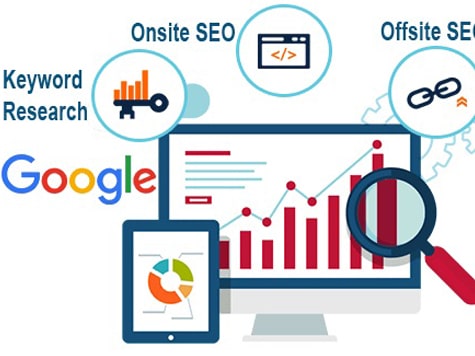-
Nalstop Pune
-
+91-9011073741
-
gigante@gigante.co.in

Welcome to gigante Technologies
GOOGLE PENALTIES RECOVERY SERVICES
Google Penalty Recovery services are mainly used to overcome being penalized by Google due to the sub-discipline of SEO, mainly the issues relating to Google Panda, Google Penguin, and Hummingbird algorithm updates. Finding expert penalty removal services is difficult for firms with the lead generation of business or E-commerce websites since such penalties can impact website traffic and conversions finally affects ROI.
Today is a world of huge competition in every business. Therefore, in order to survive in such a cut-throat competition, every business tries to reach its customers by using the internet.
Search engine visibility and traffic are very important for every online business and therefore businesses strive to achieve top ranking in search engines, like Google. But, it is not really a simple task.
In order to get a higher ranking in Google, So need to develop unique quality content on the website. This content should not be plagiarized from other sources and should not use any other black hat method to achieve the highest Google ranking in a shorter period of time.
Request a call back
What is GOOGLE PENALTY?
When digital marketers or peoples do not follow the ethical way of publishing content on its website, then they will be punished by Google. Google Penalized in the form of de-ranking in SERP. Google may perform billions of manual actions each month to detect spamming or unethical websites. In addition, there are algorithmic Google updates such as Penguin, Panda and Hummingbird, Google Fred, Possum etc.
When You Need Google Penalty Recovery Services?

When you have received a warning through Google Webmaster Tools or through any other Google products like GMB, Google Maps for unethical way to use such Google services for lead generation or for higher ranking in SERP , you can be certain your Google listing or website has been hit with a penalty. In the absence of an Google official warning, call signs of a penalty includes:
- A sudden drop in website-wide or page-wise organic traffic
- An sudden drop in ranking for a specific keyword or groups of keywords
- No other explanation for these drops
If you suspect a penalty, you must take action against penalty as soon as possible. The negative flow of traffic and rankings will not recovered on its own; in fact, it will likely get worse and may lead more de-ranking and decrease in traffic. However, if you take the proper recovery steps for such penalty and notify Google, the damage which happens can be undone. This outcome is mention as Google penalty recovery services.

Google Penguin Recovery Services
Google Penguin penalties identify with linking issues like spammy or dead links which make a bad user experience and record for the larger part of penalties that influence E-Commerce business and lead generation websites.
A website’s back-links account implies the total back-links pointing towards your domain is a hugely significant Rank positioning factor in Google’s algorithm. The Penguin algorithm update was started to recognize low quality or “unnatural” links which may influence ranking and traffic towards the website.
A large number of these links were made by SEOs point of view, however, others were made coincidentally by organizations that were following or thought they were following link building referencing best practices at that point.
The process for Google Penguin punishment removal services begins with gathering and examining back-links to detach problem links like spammy or dead links from great ones. This work includes master activity, as low-quality links are not always simple to recognize.
Active indications of a low-quality link incorporate those from the low domain authority sites, spammy link directories, site-wide links, paid links, links on Web pages with totally irrelevant content, spammy press release platform links, and over-optimized anchor text links, even social media links with irrelevant subjects. While eliminating, or attempting to eliminate, bad links are significant, not going over the edge and eliminating great links is likewise significant.
Great links are hard to acquire for most organizations and will be hard to replace. Skill and experience are required for the penalty recovery firm for showing signs of improvement and speedy outcomes.
When bad links have been distinguished, the host Webmaster must be recognized and reached with a request to eliminate or updates the links. This progression of the cycle includes a lot of base work, perseverance, and patience. Google likewise offers special tools to identify bad links, yet this CANNOT be utilized as an alternate route to abstain from accomplishing the difficult work of contacting Webmasters to clean uplinks. Most importantly, Google needs to see the efforts.
The following stage in the recovery cycle is to present a re-examination request to Google, prompting it you have distinguished the issues, taken (recorded) activity to fix them, and started an activity intend to prevent future occurrences. The re-evaluation request ought to likewise clarify why the problems happened and express a statement of regret.
At long last, the recovery team screens traffic and rankings to search for improvement. The whole process can expend a while months or more, yet with continued and decided efforts, penalties can be overcome.
Google Panda Recovery Services
Google Panda penalties identify with content issues like plagiarized, duplicate or copy content and normally influence websites made to create for advertising income and affiliate sales.
Google always gives detailed guidance for creating a high-quality content for website which is necessary for great user experience.
Following to these quality standards for on-page and off-page content is the most ideal approach to overcome Panda penalties and avoid future one with maintaining traffic flow towards website.
Adding or updating high-quality content is only solution for a Panda algorithm recovery. From a more extensive perspective, the Panda update is pointed toward punishing sites that offer an incredibly extremely poor overall user experience (UX). Google normally needs to present high-quality Web pages to its clients. Thus, website factors that adversely affect UX must be corrected for fast recovery in Panda algorithm. These factors normally incorporate with slow page-loading speed, absence of administration terms, high bounce rates, short website spending times, mobile-unfriendly Web pages, and outdated design with no mobile responsiveness and page coding.
Google Panda Recovery Services recognizes sources of low-quality content, just as evaluates other UX- UI issues, concentrate on a recovery plan, apply it, and verify traffic to check improvement. Google Panda is the core algorithm for deciding the ranking position in SERP.
Google may penalize you if:
1. Follow black hat SEO practices
2. You violate Google guidelines and push the link-building process to the limit.
3. You post duplicate content or low-quality content or add unnecessary keywords.
4. You will also post spam or unrelated links to get higher rankings
Tips to get from GOOGLE PENALTY
Once you know the reasons behind being punished by Google, you never want to be punished or removed from Google altogether. Here are some ways in which you can overcome the Google penalty.
Manual Penalty Recovery
Algorithm Penalty Recovery
Compound Penalties Recovery
Industries We Serve
Education
Vestibulum ante ipsum primis sit amet justo elit faucibus orci luctus ultrices posuere cubilia Curae.
Travel
Vestibulum ante ipsum primis sit amet justo elit faucibus orci luctus ultrices posuere cubilia Curae.
E-commerce
Vestibulum ante ipsum primis sit amet justo elit faucibus orci luctus ultrices posuere cubilia Curae.
News Portal
Vestibulum ante ipsum primis sit amet justo elit faucibus orci luctus ultrices posuere cubilia Curae.
Real Estate
Vestibulum ante ipsum primis sit amet justo elit faucibus orci luctus ultrices posuere cubilia Curae.
Technology
Vestibulum ante ipsum primis sit amet justo elit faucibus orci luctus ultrices posuere cubilia Curae.
Hospitality
Vestibulum ante ipsum primis sit amet justo elit faucibus orci luctus ultrices posuere cubilia Curae.
Healthcare
Vestibulum ante ipsum primis sit amet justo elit faucibus orci luctus ultrices posuere cubilia Curae.
awesome services
What we offer
100% Responsive
Lorem ipsum dolor sit amet, consectetur adipiscing elit. Ut elit tellus, luctus nec ullamcorper.
Creative Designs
Vestibulum ante ipsum primis sit amet justo elit faucibus orci luctus ultrices posuere cubilia Curae.
Reasonable Prices
Vestibulum ante ipsum primis sit amet justo elit faucibus orci luctus ultrices posuere cubilia Curae.
Real time Statistics
Lorem ipsum dolor sit amet, consectetur adipiscing elit. Ut elit tellus, luctus nec ullamcorper.
Latest Technology
Vestibulum ante ipsum primis sit amet justo elit faucibus orci luctus ultrices posuere cubilia Curae.
SEO Integration
Vestibulum ante ipsum primis sit amet justo elit faucibus orci luctus ultrices posuere cubilia Curae.
Social Media Integration
Lorem ipsum dolor sit amet, consectetur adipiscing elit. Ut elit tellus, luctus nec ullamcorper.
Dedicated Team
Vestibulum ante ipsum primis sit amet justo elit faucibus orci luctus ultrices posuere cubilia Curae.
Retina Graphics
Vestibulum ante ipsum primis sit amet justo elit faucibus orci luctus ultrices posuere cubilia Curae.

trusting partners
Partners





